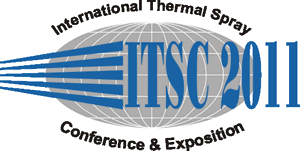| Abstract: |
Cavitation erosion process occurs when the surface is exposed to fluid with localized pressure reduction. Cavitation frequently occurs in hydraulic equipments like: hydraulic turbines, valves, pumps and ship propellers Nowadays the Arc Thermal Spray Process, ASP, obtains coatings with good cavitation resistance. ASP process has a possibility to recover hydraulic blade runners in short maintenance period. This process can be cheaper and faster than welding process. Fe-Cr-Mn-Si is a cavitation resistance class of steel with high oxidation elements concentration, which is important for arc thermally sprayed materials properties. The deposition of cavitation resistance materials in turbine blades is an important way to reduce the cavitation damage. Fe-Mn-Cr-Si is a cavitation resistance steel with strain induced phase transformation, like Co stainless steel. The influences of chemical composition on the, oxide formation, microstructure, cavitation resistance of Fe-Mn-Cr-Si thermally sprayed coatings were studied as well as Francis hydraulic turbine field evaluation. Microstructures and properties were investigated by XPS, XRD, optical microscopy and ultrasonic cavitation test, based on ASTM G32-95. The best cavitation resistance, with 21,0mg/h mass loss rate, was obtained in Fe-Mn-Cr-Si alloy with Ni addition. The main reasons were the low oxide content, better splats wetting and lower splashed droplets contet than Fe-Mn-Cr-Si without Ni. Strain induced phase transformation occurred in arc thermally sprayed coatings during cavitation tests. The better performances for Fe-Mn-Cr-Si, without Ni, were obtained in alloys with more strain induced martensite formation during cavitation tests. After 2.000 operation hours field test, was verified that the recovered areas presented only a small amount of eroded areas, with significantly reduction of cavitation erosion compared with uncoated areas.
|
|
